How to Train Your Child to Use a Speech Device Effectively


Unlocking Communication Potential Through Speech Devices
For children facing communication challenges, speech devices offer a transformative bridge to express their needs, thoughts, and feelings. Training your child to effectively use these devices requires a comprehensive approach combining therapeutic strategies, positive reinforcement, and engagement in naturalistic settings. This article outlines essential methods and collaborative therapies that support successful adoption of speech devices, fostering enhanced communication and social integration.
Understanding the Role of Speech Devices in Therapy
What Is the Purpose of Speech Devices in Communication Therapy?
Speech devices are tools designed to assist children with communication challenges, especially those on the autism spectrum, by providing alternative ways to express themselves. These devices include picture boards, assistive technology, and specialized communication apps that enable children to convey their thoughts, needs, and feelings when verbal communication is difficult.
How Do Speech Devices Complement Other Therapeutic Approaches?
Speech devices work hand-in-hand with therapies like Applied Behavior Analysis (ABA) and speech-language therapy. While ABA focuses on behavior modification and learning skills using positive reinforcement, speech therapy targets language development. Together, speech devices enhance these therapies by providing practical means for children to practice communication in natural settings, often supported by therapists during sessions. For example, using a picture board during ABA sessions can help reinforce social and emotional skills.
What Are the General Benefits for Children with Communication Difficulties?
The use of speech devices offers multiple benefits:
- Enhances expressive and receptive communication.
- Builds confidence by enabling children to participate more fully in social interactions.
- Supports language development alongside other therapies.
- Offers tailored communication options that suit individual needs.
- Facilitates smoother transitions in school and daily life by improving understanding.
By integrating speech devices into therapy, children experience improved communication abilities, often leading to better social skills and reduced frustration. This integration is especially effective when started early, contributing to lasting developmental gains.
The Importance of Early Intervention in Speech Device Training
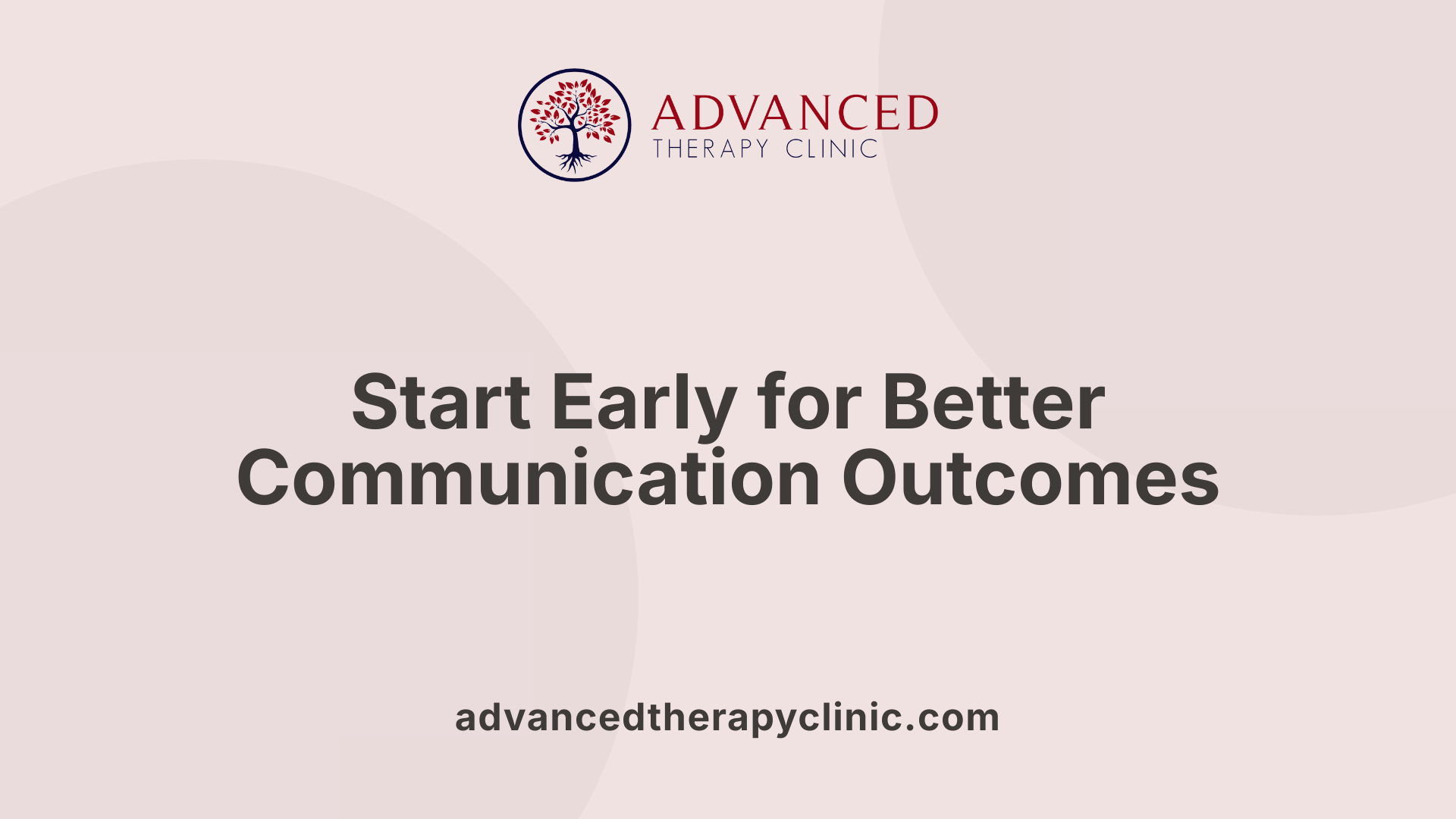
Benefits of starting speech device training before age four
Starting speech device training early, ideally before age four, offers significant advantages for children with autism spectrum disorder (ASD). Early intervention capitalizes on the brain's neuroplasticity during these crucial developmental years, resulting in faster and more effective skill acquisition. Combining speech device training with therapies like Applied Behavior Analysis (ABA) enhances communication abilities by integrating behavioral and language approaches.
Impact on verbal and non-verbal communication skills
Early speech device training significantly improves both verbal and non-verbal communication skills. Children learn to use assistive technology, picture boards, and visual aids to express their needs and emotions efficiently. These tools, when incorporated in structured ABA sessions, help children develop foundational language skills alongside motor and behavioral skills. Furthermore, play therapy embedded in these interventions promotes the understanding of non-verbal cues such as facial expressions and gestures, which are vital for effective communication.
Preparation for school environments
Intervening early with speech device training prepares children for academic and social success in school settings. By enhancing adaptive behaviors, social skills, and emotional regulation, children gain confidence and independence that facilitate smoother transitions into structured classroom environments. Group therapy sessions focusing on cooperative play and social interaction further equip children with skills essential for peer engagement and effective communication in school.
Overall, early speech device training, combined with ABA and other therapies, forms a comprehensive approach to fostering communication development and easing the path toward educational achievement and social integration.
Integrating ABA Therapy to Enhance Speech Device Use
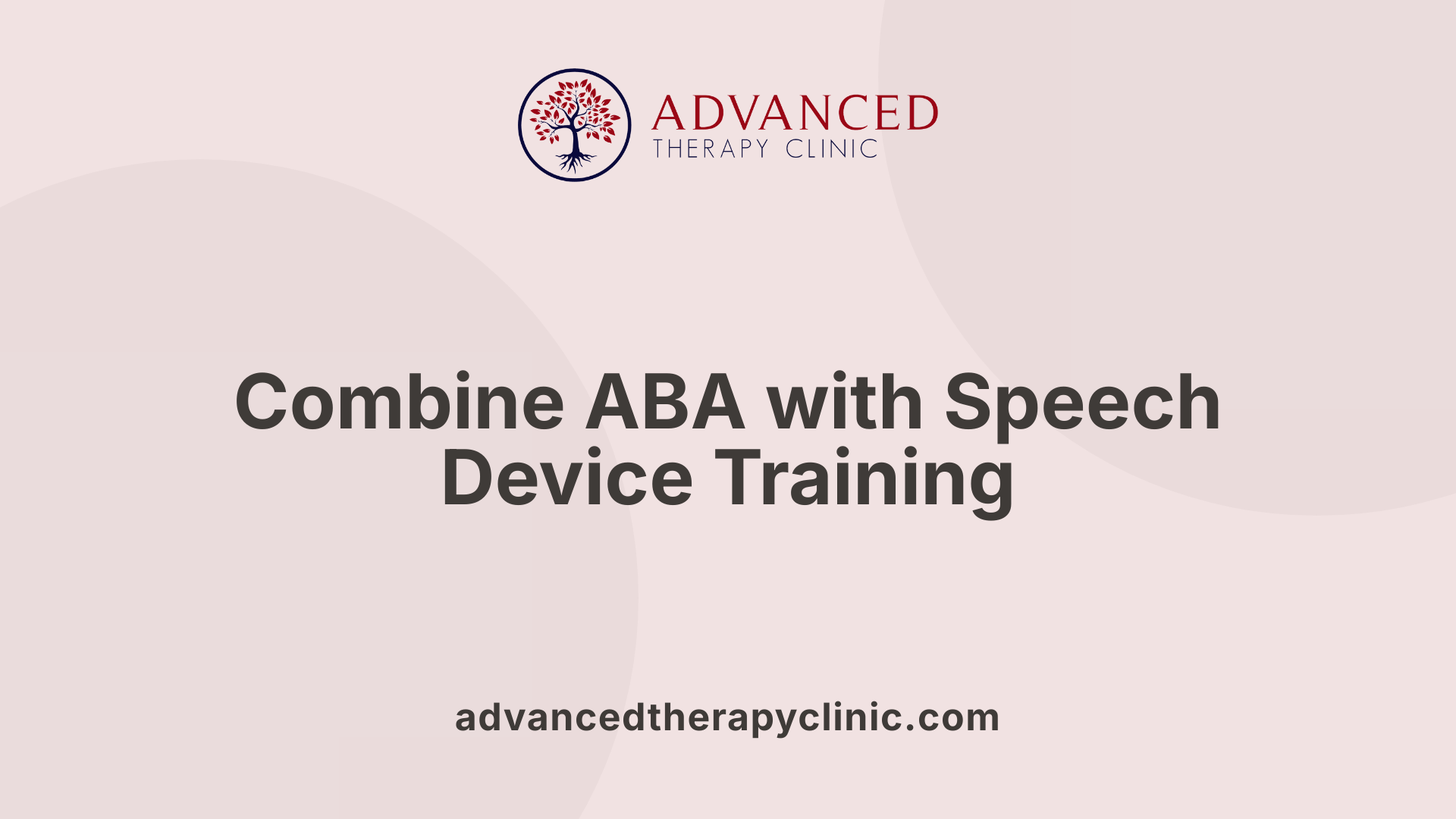
Overview of ABA Therapy Techniques
Applied Behavior Analysis (ABA) therapy employs structured, individualized techniques to improve various skills in children with autism spectrum disorder (ASD). Sessions often focus on targeted behaviors using behavior modification strategies, including breaking down skills into manageable steps to facilitate learning.
Use of Positive Reinforcement
A central component of ABA is positive reinforcement, where desirable behaviors are immediately rewarded to encourage repetition. This approach helps children develop motivation and confidence in using new skills, such as navigating and communicating through speech devices.
Behavior Modeling for Speech Device Usage
ABA therapists use behavior modeling to demonstrate how to operate and communicate with speech devices. By observing and imitating these behaviors, children learn to integrate the use of these tools naturally into their communication repertoire.
Breaking Down Communication Goals Into Smaller Steps
Complex communication goals involving speech device use are divided into smaller, achievable milestones. This stepwise method allows children to gain mastery incrementally, ensuring steady progress in both understanding and expressing language through the device.
Together, these ABA techniques create a supportive learning environment tailored to each child's communication needs, promoting successful use of speech devices to enhance interaction and social engagement.
Collaborative Benefits of Combining Speech Therapy and ABA
How do speech therapists and ABA therapists work together?
Speech therapists and ABA therapists often collaborate closely to enhance communication outcomes for children with autism spectrum disorder. While ABA therapists focus on developing behavioral, motor, and learning skills, speech therapists address language and communication challenges directly. They share insights and strategies to ensure therapies complement each other and reinforce targeted skills, often coordinating sessions and goals for consistency.
What are the focus areas of speech therapy versus ABA?
Speech therapy centers on language-related skills, using tools like picture boards, songs, games, sign language, assistive technology, and visual aids. Its main goal is to improve expressive and receptive communication abilities. Meanwhile, ABA therapy concentrates on behavior modification through positive reinforcement. It targets a broad range of skills, including social skills, emotional regulation, self-help activities, and adaptive behaviors, supporting overall development.
How are language acquisition and communication skills optimized?
Combining ABA and speech therapy creates a comprehensive approach that addresses both behavior and communication needs. Early intervention, ideally starting before age four, is vital to maximizing progress. Techniques such as play therapy and group social skills sessions are used to develop verbal and non-verbal communication, including facial expressions, gestures, and cooperative play. Together, these therapies help children acquire foundational language skills and confidently engage in social interactions.
Training Techniques: Structured and Individualized Sessions
Importance of Individualized and Structured Sessions
ABA therapy is designed around individualized and structured sessions tailored to each child's unique needs. This customization allows therapists to focus on specific behaviors and skills, ensuring that interventions are relevant and effective. Structured sessions provide a consistent routine, helping children with autism spectrum disorder (ASD) feel secure and ready to learn.
Use of Immediate Reinforcement
A central component of ABA sessions is immediate positive reinforcement. When a child successfully demonstrates a desired behavior, such as using a communication tool correctly, they receive immediate rewards like praise or tokens. This reinforcement encourages the repetition of positive actions and helps accelerate learning.
Developing Targeted Behaviors Through Speech Devices
Speech-language therapy often incorporates assistive technology, such as speech devices, to improve communication skills. Within ABA sessions, these devices are integrated to develop targeted behaviors like requesting, labeling, and expressing needs. By combining behavioral techniques with speech devices, children learn to navigate communication challenges more effectively.
Examples of Session Content and Goals
Sessions typically break down complex skills into smaller, manageable steps. Goals may include:
- Improving self-presentation by teaching how to greet others appropriately
- Enhancing patience and tolerance through structured activities
- Recognizing and responding to emotions using visual aids
- Practicing social skills such as turn-taking and cooperative play
- Building self-help skills like dressing or eating independently
Each session uses a mix of play therapy, visual supports, and reinforcement strategies to encourage steady progress towards these goals.
Creating Naturalistic Learning Environments for Generalization
Teaching speech device use in everyday settings
In ABA and speech therapy, introducing speech devices within a child's daily routine is crucial. Practicing with these tools during common activities—like meal times or play—helps children become comfortable and proficient. Embedding device use naturally encourages children to communicate spontaneously, rather than relying solely on structured therapy sessions.
Encouraging spontaneous communication
Naturalistic learning environments promote communication beyond prompted interactions. Therapists often create scenarios where children initiate greetings or requests on their own. This approach fosters genuine social exchanges and boosts confidence in using speech devices or verbal skills spontaneously.
Involving family and caregivers
Family members and caregivers play an essential role in reinforcing communication skills learned in therapy. By training them to use speech devices and to respond positively to children's attempts to communicate throughout everyday interactions, the skills transfer beyond clinical settings. This consistent support accelerates progress and helps maintain communication gains.
Using naturalistic settings to teach communication allows children to generalize skills more effectively across different contexts. Speech devices become practical tools integrated into their social and home lives, enhancing both verbal and non-verbal communication abilities.
Engaging Parents and Caregivers in the Training Process
Role of Parents in Reinforcing Speech Device Usage
Parents and caregivers play a crucial role in supporting children with autism spectrum disorder (ASD) as they learn to use speech devices through speech therapy. Their involvement ensures that communication gains made during therapy sessions are reinforced consistently at home. By actively encouraging device use in daily interactions, parents help children generalize skills beyond the clinical environment, increasing the effectiveness of speech interventions.
Training Parents for Consistency
To maximize outcomes, therapists provide parents with training on how to integrate speech device practice into everyday routines. This training focuses on maintaining consistent use of the device, understanding the child's communication cues, and offering immediate positive reinforcement when the child attempts communication. Such consistency creates a supportive learning environment where the child feels motivated and confident to engage with the speech device.
Techniques to Encourage Device Use at Home
Parents are guided to use various techniques to promote speech device usage, including:
- Modeling: Demonstrating how to use the device during conversations and daily activities.
- Prompting: Gently encouraging the child to use the device to express wants or needs.
- Reinforcement: Offering praise, rewards, or attention whenever the child successfully uses the device.
- Creating Naturalistic Opportunities: Embedding device use in natural settings like mealtime or playtime to make communication meaningful and functional.
By employing these strategies, parents actively contribute to their child’s communication progress, creating a collaborative and consistent support system alongside professional therapy.
Using Play Therapy to Develop Communication Skills with Speech Devices
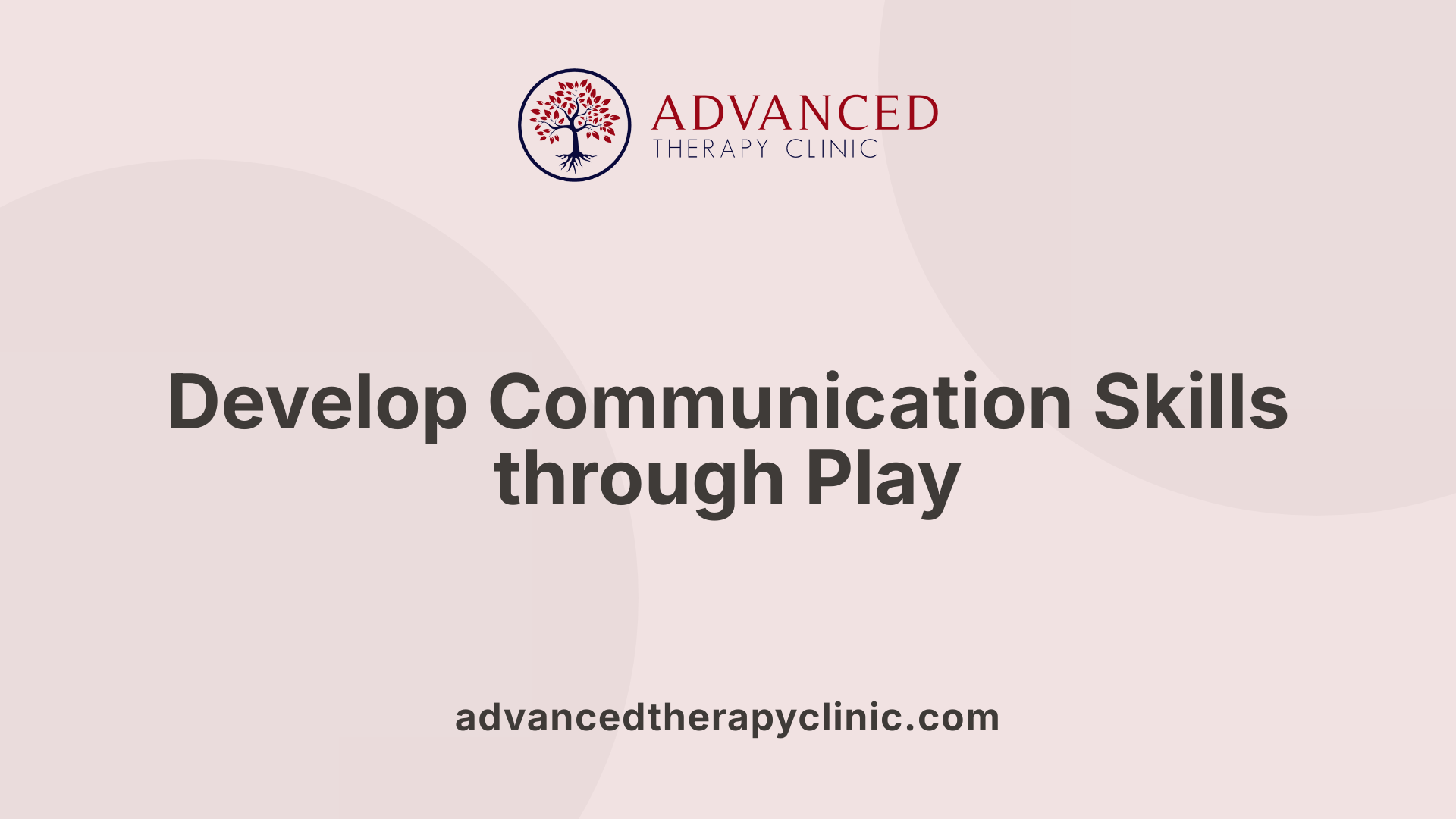
Utilizing play as a natural communication medium
Play therapy serves as a vital tool in speech therapy, offering children with autism a familiar and enjoyable context to practice communication skills. Since play is a universal language among children, it naturally encourages interaction and expression, which are essential for language development. By embedding speech device use within play activities, therapists create a supportive environment where children feel motivated to explore new ways of communicating.
Developing non-verbal cues alongside device use
Along with encouraging verbal attempts using speech devices, play therapy also focuses on enhancing non-verbal communication such as facial expressions, gestures, and body language. These skills are crucial for social interactions and can be effectively practiced during play. Therapists strategically guide children to recognize and use these cues, providing immediate positive reinforcement which strengthens their communication abilities.
Strategies for engaging children through play
Engagement is key in play therapy sessions. Therapists use a variety of techniques including games, songs, and interactive toys to capture children’s interest. Structured play scenarios are designed to encourage turn-taking, patience, and joint attention, all of which support communication development. The integration of speech devices into these activities helps children transfer their communication skills from the playroom to everyday settings, promoting generalization and functional use of their newfound abilities.
Advantages of Group Therapy Sessions for Social Communication
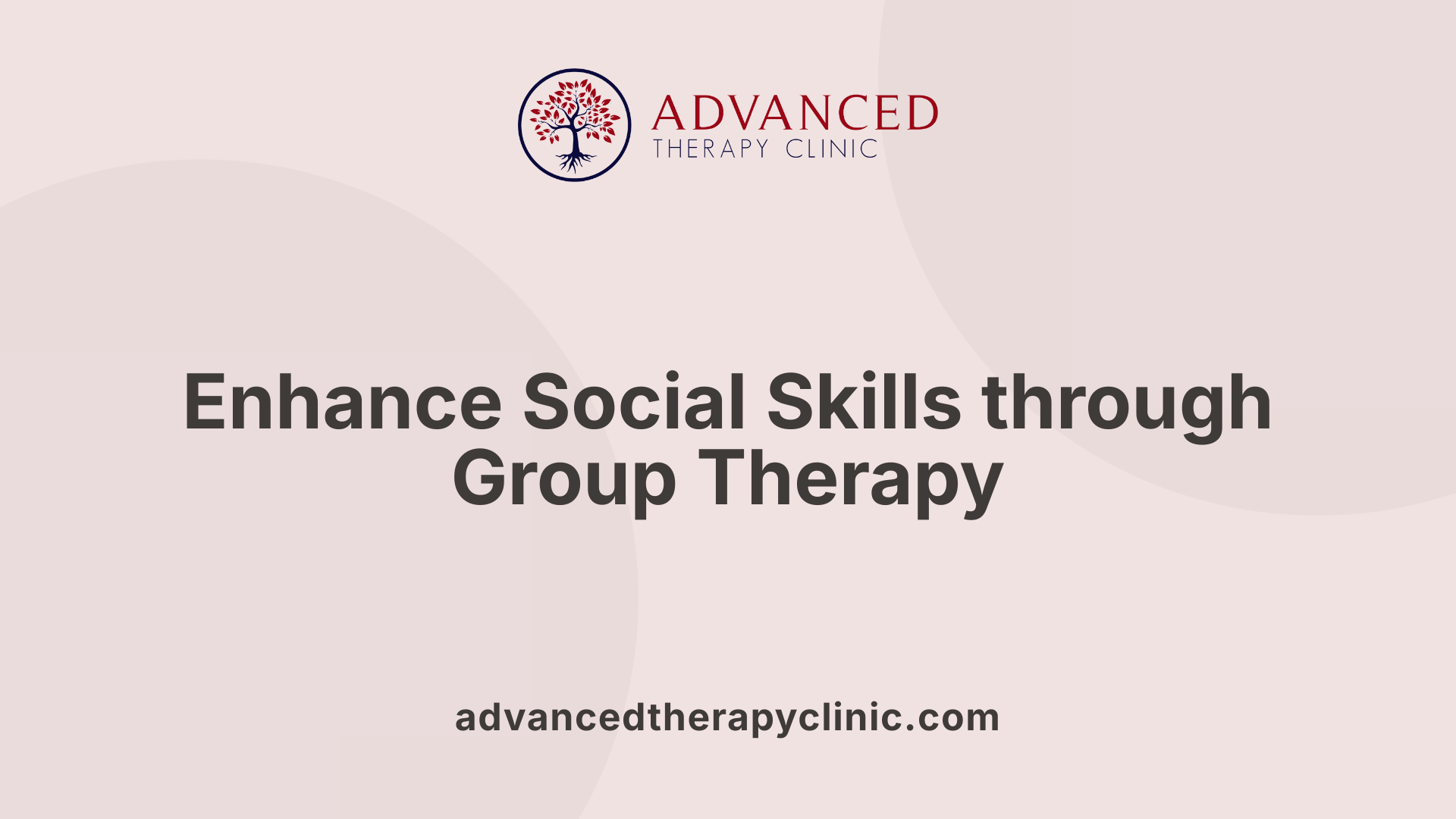
How Does Group Therapy Support Practicing Speech Devices in Social Settings?
Group therapy offers a practical environment where children can use speech devices among their peers. This setting allows them to practice and become comfortable with communication tools in real-time social interactions rather than isolated therapies. It encourages spontaneous use of these tools which enhances fluency and confidence in everyday conversations.
How Does Group Therapy Help in Reading Facial Expressions and Body Language?
In a group setting, children have abundant opportunities to observe and interpret non-verbal cues such as facial expressions and body language. Therapists guide children to recognize these social signals, which are crucial for effective communication. Repeated exposure in diverse social contexts helps children improve their ability to read emotions and respond appropriately.
How Does Group Therapy Facilitate Cooperative Play with Peers?
Cooperative play is vital for social development. Group therapy sessions promote this by encouraging children to collaborate, share, and take turns during play. Therapists design activities that require teamwork and communication, thereby enhancing social skills and peer relationships.
By integrating these elements, group therapy strengthens communication skills and social competence in children with autism, preparing them for more successful interactions in daily life.
Building Emotional Regulation and Patience During Training

Teaching Patience and Tolerance Through ABA
ABA therapy uses structured sessions that incorporate positive reinforcement to help children develop patience and tolerance. By breaking down behaviors into manageable steps and rewarding gradual progress, children learn to delay gratification and endure frustrating situations calmly.
Managing Frustration Related to Speech Device Use
Many children face challenges and frustration when learning to use speech devices. ABA therapists implement strategies such as immediate reinforcement and creating supportive learning environments to ease these frustrations. Gradually increasing device use and celebrating small successes build confidence and reduce anxiety.
Techniques to Support Emotional Regulation
To further aid emotional regulation, therapists often integrate play therapy and naturalistic learning scenarios that engage children in social interactions. These methods nurture skills like recognizing emotions and self-presentation. Additionally, involving parents helps reinforce emotional control techniques across various settings, fostering consistency and progress.
Reinforcing Communication Through Positive Behavior Support
How does ABA replace unwanted behaviors with desired communication?
ABA therapy focuses on identifying behaviors that hinder effective communication and replacing them with more appropriate, functional communication skills. Through positive reinforcement, children are encouraged to use desired communication methods—such as verbal requests, signs, or speech devices—instead of behaviors like tantrums or silence. This targeted behavior modification helps improve social and communication skills by making meaningful communication more rewarding.
How are individualized reward systems created?
Individualization is important to the success of ABA interventions. Therapists assess each child's preferences and motivations to develop tailored reward systems. These rewards might include verbal praise, tokens, access to preferred toys, or breaks. The reinforcement is immediately delivered after the child demonstrates the desired communication behavior, strengthening the connection between the behavior and positive outcomes.
What are examples of positive reinforcement in speech device use?
In speech therapy combined with ABA, positive reinforcement is used to increase the use of speech-generating devices. For example, when a child successfully uses a picture board or an electronic speech device to request an item or express a feeling, they are immediately rewarded. Rewards could be a favorite activity, a snack, or verbal affirmation, encouraging repeated use and practicing spontaneous communication.
This thoughtful approach merges behavior analysis and speech therapy tools to build essential communication skills effectively, showcasing how reinforcement strategies directly support language development.
| Communication Challenge | ABA Strategy | Example Reward |
|---|---|---|
| Non-verbal requesting | Reinforcing use of picture boards | Access to preferred toy |
| Difficulty with speech initiation | Encouraging use of speech devices | Positive verbal praise |
| Replacing tantrums | Teaching alternative communication | Token system for tokens exchange |
Developing Adaptive and Self-Help Skills Alongside Communication
Integrating communication goals with daily living skills
ABA therapy emphasizes the integration of communication targets with essential daily living skills. Sessions are meticulously structured to teach children to use communication in practical contexts, such as requesting assistance or expressing needs during routine activities. This method supports generalized skill transfer, often involving parental participation to reinforce learning outside therapy.
Encouraging self-presentation and independence
Critical components of ABA involve fostering self-presentation, patience, and tolerance, all of which contribute to a child's independence. By breaking goals into smaller, manageable steps and utilizing positive reinforcement, children gradually acquire self-help abilities like dressing, eating, and hygiene. These achievements bolster confidence and readiness for social integration.
Supporting overall cognitive development
The therapeutic approaches in ABA — including individualized rewards and naturalistic learning environments — stimulate cognitive growth along with language acquisition. When combined with speech therapy, which enhances communicative abilities through diverse tools such as visual aids and assistive technology, children gain comprehensive support for cognitive and adaptive behavior improvements.
This multifaceted approach ensures that children with autism spectrum disorder develop the communication and adaptive skills necessary for daily functioning and social success.
Overcoming Common Challenges in Speech Device Training

How Can Resistance or Reluctance to Use Devices Be Addressed?
Children with autism spectrum disorder (ASD) may initially show resistance or reluctance toward using speech devices. To address this, therapists often introduce devices in a playful and engaging manner. Incorporating play therapy techniques allows children to experience communication as a natural and enjoyable activity. Additionally, gradually familiarizing the child with the device during structured sessions helps ease apprehension.
What Strategies Enhance Motivation in Speech Device Use?
Enhancing motivation is crucial to successful speech device training. Positive reinforcement, a principle central to Applied Behavior Analysis (ABA), is employed to encourage consistent use of the device. Reward systems are often individualized to the child’s preferences, making the learning process satisfying and reinforcing desired communication behaviors. Integrating familiar songs, games, and visual aids can also boost engagement and motivation.
How Are Technical or Usability Difficulties Managed?
Technical challenges or usability issues can hinder progress. To prevent frustration, caregivers and therapists ensure that devices are age-appropriate and user-friendly. Ongoing training for both the child and caregivers on device operation is essential. Collaboration between speech therapists and ABA practitioners facilitates adjustments to the device setup and communication goals, ensuring a seamless and effective learning experience.
The Role of Visual Aids and Assistive Technology Enhancements
Incorporating Picture Boards and Visual Cues
Visual aids such as picture boards play a crucial role in enhancing communication for children with autism spectrum disorder (ASD). These boards use images to represent words or concepts, helping children understand and express their needs and feelings even if verbal communication is limited. Visual cues also support memory and learning by providing consistent, clear prompts.
Enhancing Device Accessibility and Engagement
Assistive technology devices, including speech-generating devices, benefit greatly from enhancements focused on accessibility and user engagement. Features like touch screens with intuitive interfaces, customizable displays, and engaging interactive elements encourage children to use the devices more frequently and confidently. These improvements help overcome motor or cognitive challenges, making communication aids more effective.
Examples of Technology Aiding Communication
Examples of technological tools supporting communication include electronic picture boards, tablet apps with speech output, and devices equipped with symbol-based languages. These tools complement both ABA and speech therapy by providing real-time, user-friendly support for expressive and receptive communication skills.
Together, visual aids and assistive technology form an integrative approach that fosters communication development, supporting children with ASD to better interact socially and participate actively in learning and daily activities.
Monitoring Progress and Adjusting Training Approaches
How Is Skill Acquisition and Communication Effectiveness Assessed?
Monitoring progress in training involves regular assessment of how well a child is acquiring targeted skills and improving communication. Therapists and caregivers observe changes in social, communicative, and daily living skills to identify improvements or areas needing more support. Tools such as behavioral checklists, direct observations during sessions, and tracking responsiveness to reinforcement help measure effectiveness.
Why Is Flexibility Important in Training Plans?
Training plans must remain flexible to accommodate the child's evolving needs and responses. Early interventions like ABA therapy rely on breaking down goals into smaller steps, so adjustments are frequently necessary. If certain behaviors or communication strategies are not progressing, therapists modify reinforcement techniques or create new naturalistic learning environments to encourage better outcomes.
How Do Therapists Collaborate to Set New Goals?
Collaboration between ABA therapists, speech-language pathologists, parents, and other professionals is crucial to set informed, individualized goals. By sharing observations and progress reports, the team collectively determines new objectives that target emerging skills or address challenges. This teamwork ensures therapy remains personalized, effective, and geared towards transferring skills into everyday life.
Preparing for School and Social Integration with Speech Devices
How Are Communication Skills Transitioned to Academic Settings?
Speech devices play a crucial role in helping children with autism spectrum disorder (ASD) take their communication skills from therapy into the school environment. These assistive technologies enable children to express themselves clearly, participate in classroom activities, and better understand instructions from teachers. Through repeated use and practice in therapy, children become familiar with their speech devices, making the transition to academic settings smoother.
In What Ways Are Peer Interactions Supported?
Using speech devices, children can engage more actively with their peers during school and social activities. These devices help bridge communication gaps, allowing children to initiate conversations, respond to questions, and express emotions. In addition, group therapy sessions, often guided by ABA and speech therapists, encourage cooperative play where children learn to interpret non-verbal cues such as facial expressions and gestures, strengthening their social skills alongside using their devices.
How Do Educators Collaborate in This Process?
Effective collaboration between therapists, parents, and educators is vital to optimize the use of speech devices within educational settings. Educators receive guidance on integrating these technologies into daily classroom routines and how to support the children's unique communication needs. This team approach ensures that communication strategies practiced in therapy generalize to academic and social situations, promoting the child's overall development and readiness for school.
Success Stories: Measurable Improvements Through Dedicated Training
Examples of Improved Social and Communicative Skills
Children undergoing ABA and speech therapy have shown significant progress in various developmental areas. These include enhanced adaptive behaviors such as patience and tolerance, better social skills like taking turns and cooperative play, and more effective communication methods encompassing both verbal and non-verbal cues. Many children demonstrate improved abilities to recognize and express emotions, which fosters clearer interactions with peers and family members.
Role of Consistent Therapy and Support
Consistent application of therapy methods, including structured ABA sessions combined with speech therapy, plays a central role in these successes. Early intervention, ideally started before the age of four, ensures that children receive continuous support to solidify learning. Personalized reward systems and reinforcement strategies help maintain motivation and encourage the acquisition of new skills. Additionally, involving parents and caregivers extends learning beyond therapy sessions, allowing skills to generalize into everyday situations.
Emotional and Behavioral Positive Outcomes
Beyond social and communication growth, dedicated training leads to important emotional and behavioral improvements. Children often show reduced separation anxiety and increased emotional regulation, contributing to better overall wellbeing. The positive reinforcement techniques used in ABA help replace undesired behaviors with constructive alternatives, ultimately promoting confidence and independence in daily living.
This integrated approach of combining behavior-focused therapy with targeted communication training illustrates not only the measurable progress children make but also highlights the vital importance of sustained, supportive interventions in their developmental journey.
Future Directions: Advances in Therapy and Technology for Communication

What emerging tools are being developed for speech device training?
Recent advancements in assistive technology have introduced innovative speech devices that complement traditional speech therapy. These include advanced communication apps with customizable interfaces, eye-tracking systems for non-verbal children, and AI-powered devices that adapt to a child’s communication progress. These tools enhance engagement and facilitate more naturalistic communication practice, making speech device training more efficient and personalized.
How are innovations improving collaboration between ABA and speech therapy?
The integration of ABA and speech therapy is becoming more seamless through technology and interdisciplinary approaches. Therapists now use shared digital platforms to track behavior and communication goals, enabling coordinated interventions. Teletherapy advancements allow simultaneous sessions, where ABA techniques reinforce communication skills taught during speech therapy. This collaborative framework maximizes skill acquisition and generalization in natural environments.
What is the continued research impact on therapy methods?
Ongoing research continues to validate and refine therapeutic approaches, emphasizing early intervention and personalized plans. Studies focus on combining reinforcement-based ABA with speech therapy tools to improve outcomes in social communication and emotional regulation. Research also explores how technology can support data-driven decision-making in therapy, ensuring real-time adjustments to meet each child’s evolving needs.
Together, these emerging technologies and collaborative strategies promise to elevate therapy effectiveness, enabling children with autism spectrum disorder to achieve greater communication success and quality of life.
Empowering Lifelong Communication Skills
Training your child to use a speech device effectively is a journey that combines evidence-based therapies, parental involvement, and adaptive learning environments. With early intervention, structured support through ABA and speech therapy, and creative engagement methods like play and group sessions, children can significantly enhance their communication skills and independence. As technology advances and therapeutic collaborations deepen, the potential for every child to find their unique voice through speech devices becomes ever more attainable, opening doors to a richer, more connected life.
References
Recent articles

What Is Speech Fluency?
Understanding the Essentials of Speech Fluency and Its Disorders

What Is Speech Fluency?
Understanding the Essentials of Speech Fluency and Its Disorders
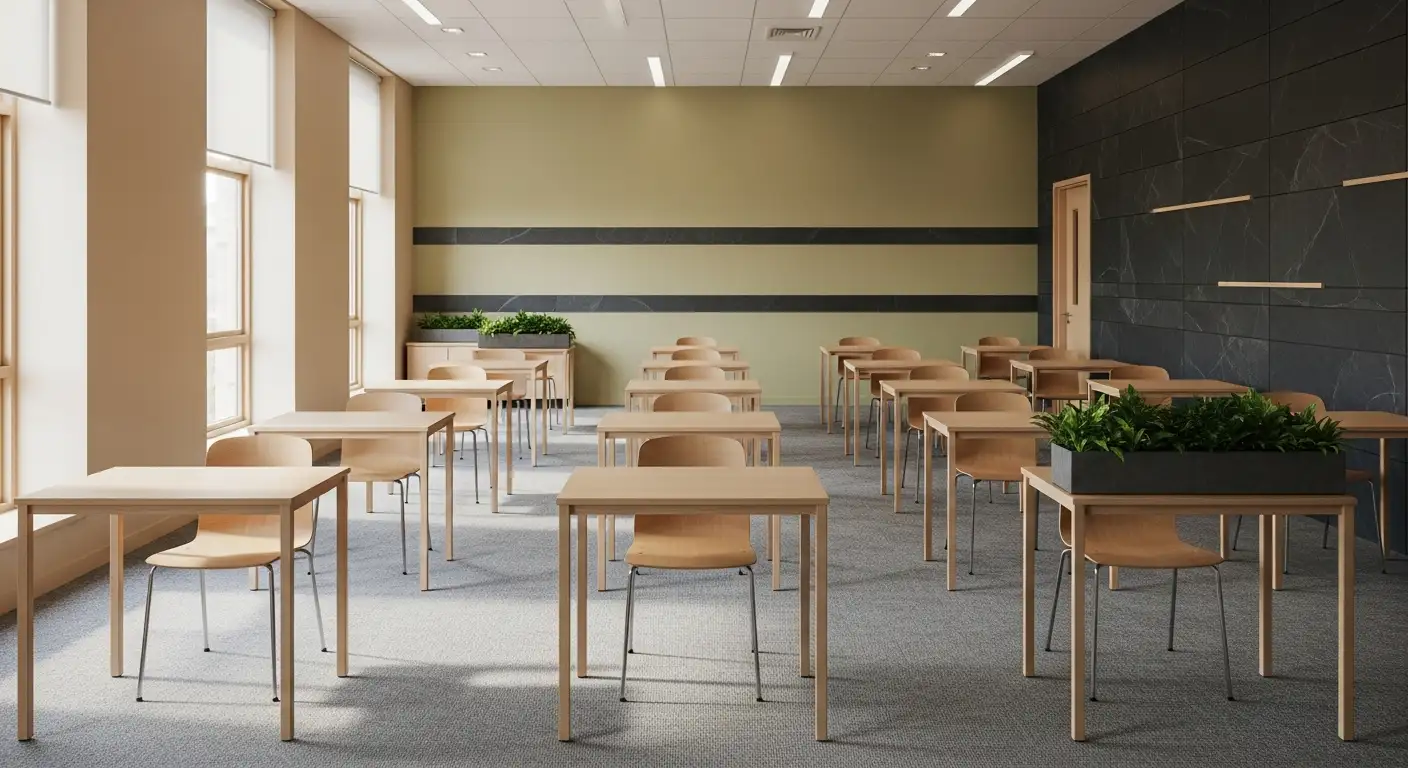
Teaching Writing to Students with Autism
Unlocking the Potential: Effective Writing Instruction for Students with Autism
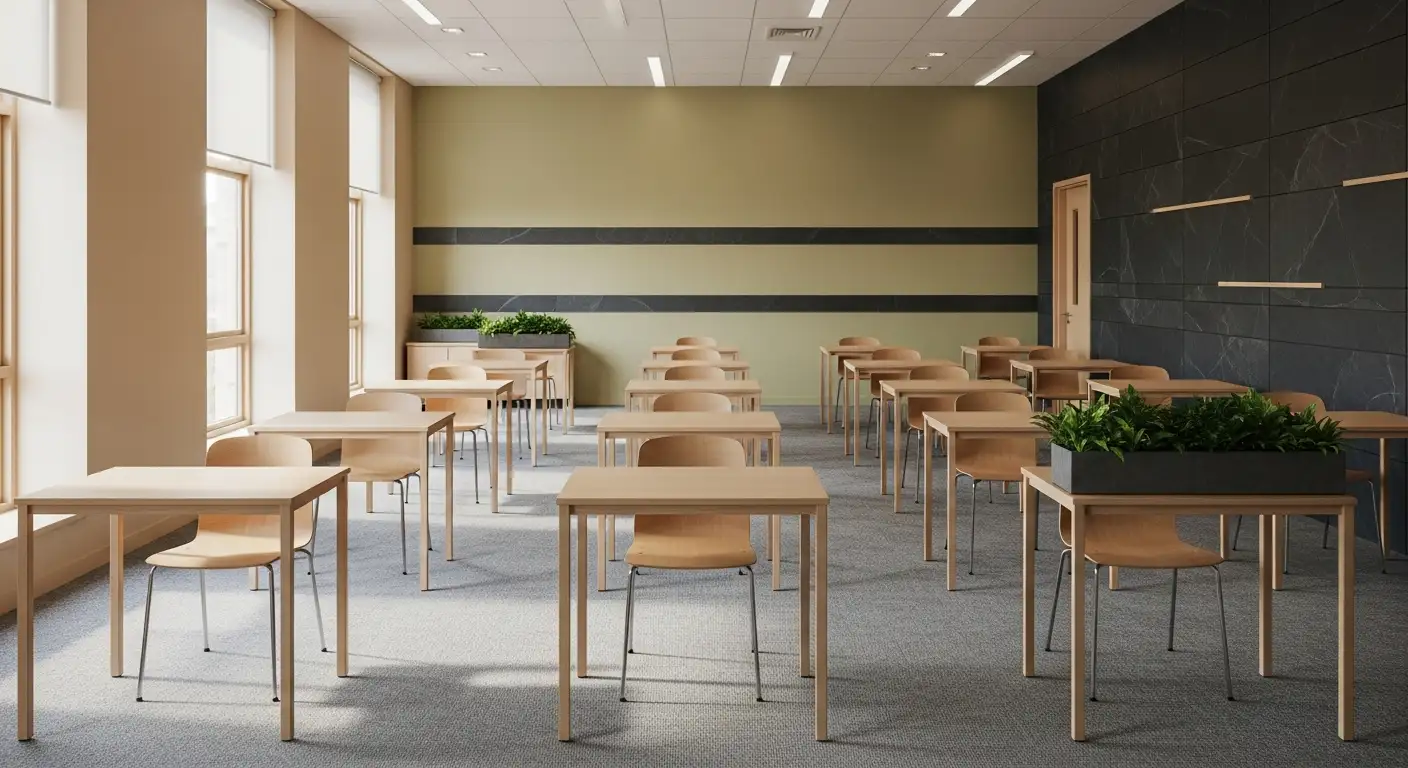
Teaching Writing to Students with Autism
Unlocking the Potential: Effective Writing Instruction for Students with Autism
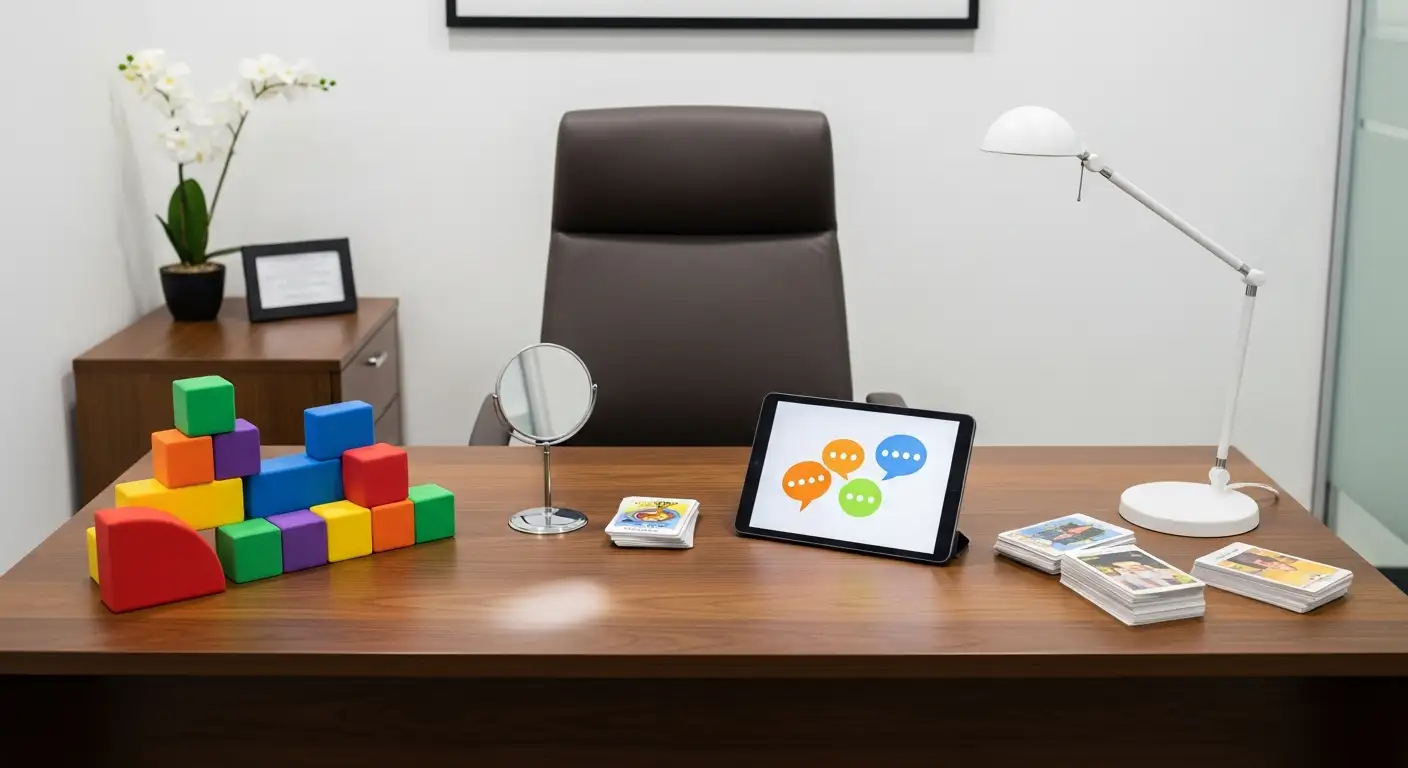
Speech Therapist School
Navigating the Path to a Rewarding Career in Speech Therapy

Pediatric Speech Therapy Programs
Unlocking Potential Early: The Role of Speech Therapy in Pediatric Development

